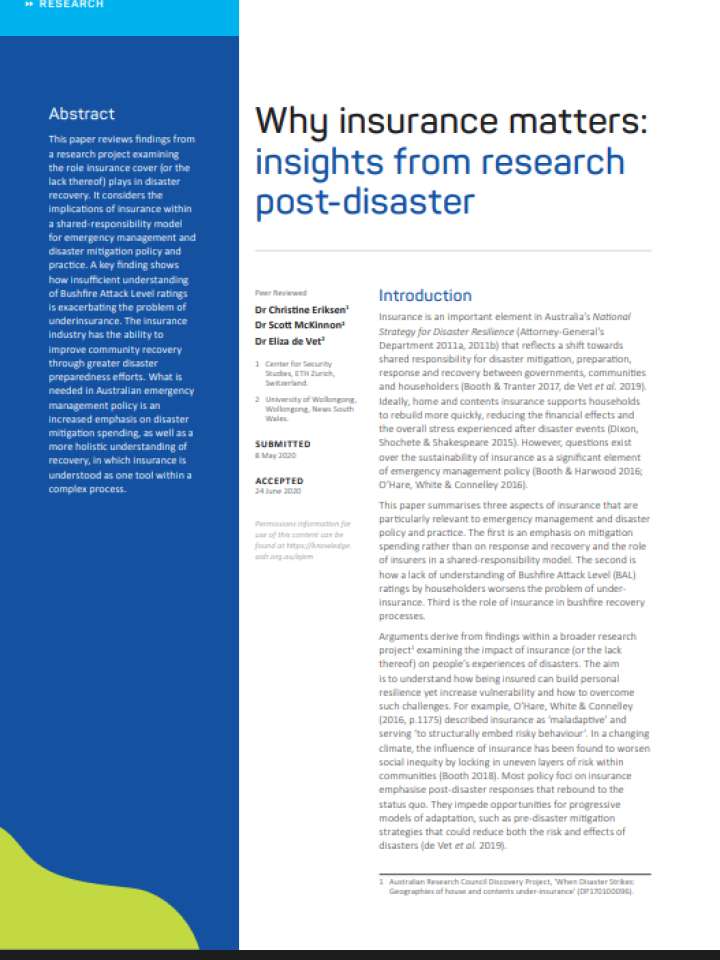Why insurance matters: Insights from research post-disaster
This paper reviews findings from a research project examining the role insurance cover (or the lack thereof) plays in disaster recovery. It considers the implications of insurance within a shared-responsibility model for emergency management and disaster mitigation policy and practice. A key finding shows how insufficient understanding of Bushfire Attack Level ratings is exacerbating the problem of underinsurance. The insurance industry has the ability to improve community recovery through greater disaster preparedness efforts. What is needed in Australian emergency management policy is an increased emphasis on disaster mitigation spending, as well as a more holistic understanding of recovery, in which insurance is understood as one tool within a complex process.
By doing so, the paper summarises three aspects of insurance that are particularly relevant to emergency management and disaster policy and practice.
- The first is an emphasis on mitigation spending rather than on response and recovery and the role of insurers in a shared-responsibility model.
- The second is how a lack of understanding of Bushfire Attack Level (BAL) ratings by householders worsens the problem of underinsurance.
- Third is the role of insurance in bushfire recovery processes.
It then concludes that the centrality of the role of insurance to Australia’s disaster resilience strategy is based, first, on a model that emphasises post-disaster response over pre-disaster mitigation and, second, on the framework of shared responsibility that inadvertently shifts costs onto households and away from government. As a result, opportunities to prevent disasters or to reduce their effects through hard and soft mitigation measures are lost.
This is not to say that insurance should have no role in emergency management policy and practice, but rather that insurers should take a greater role in mitigation measures, including through education and engagement programs and by offering reductions in premiums on retrofitted homes. By actively working to reduce costs through pre-disaster spending, insurers can support the ongoing sustainability of their industry while reducing impacts on communities.
Explore further
